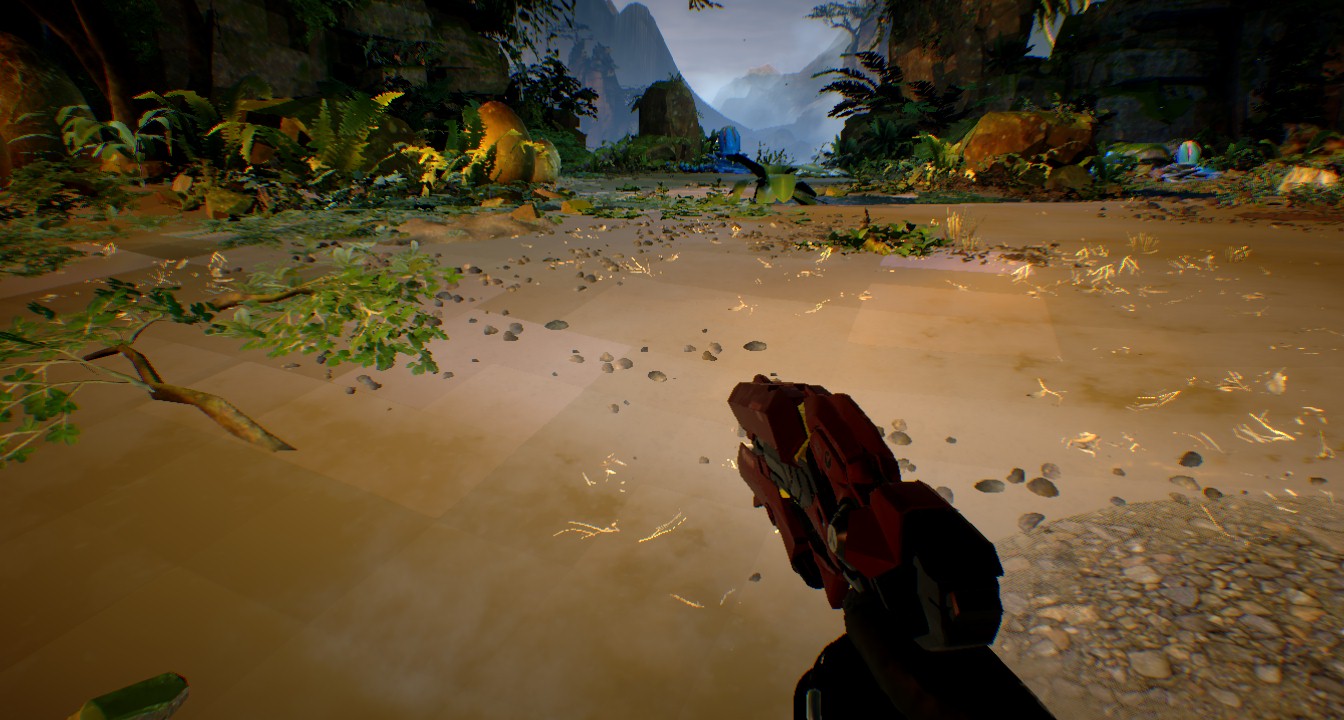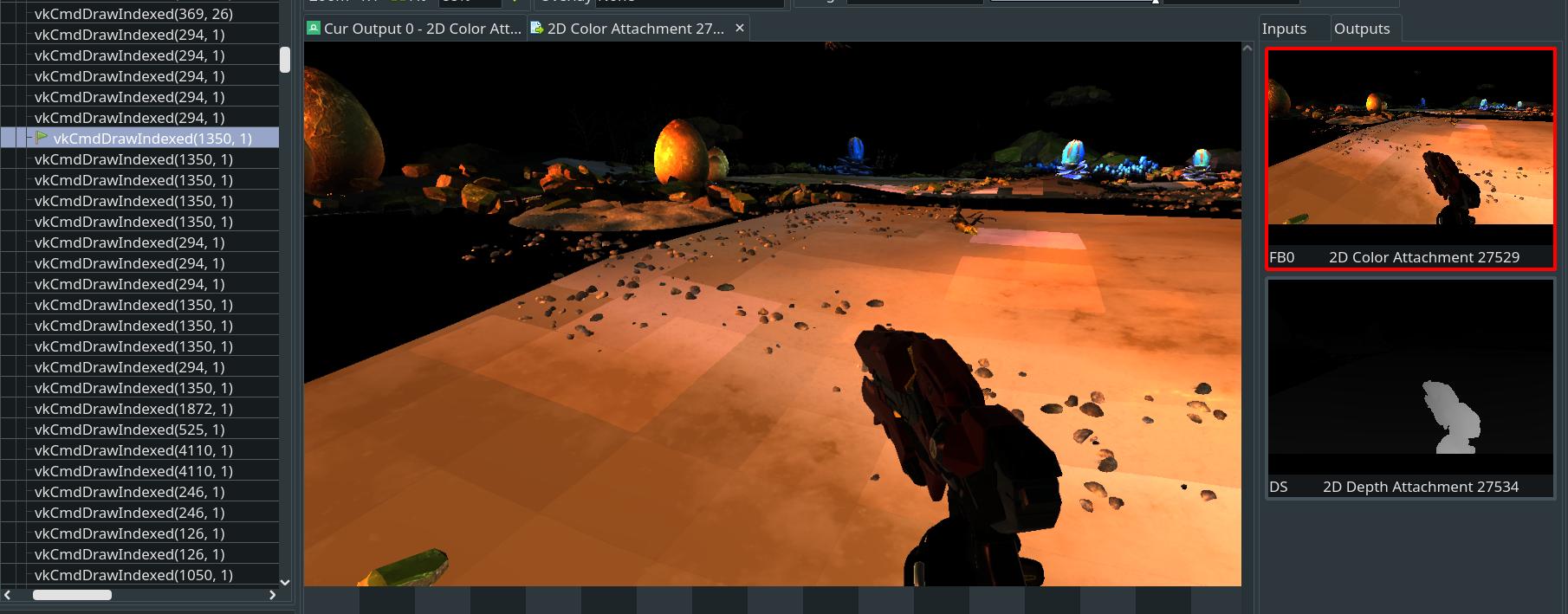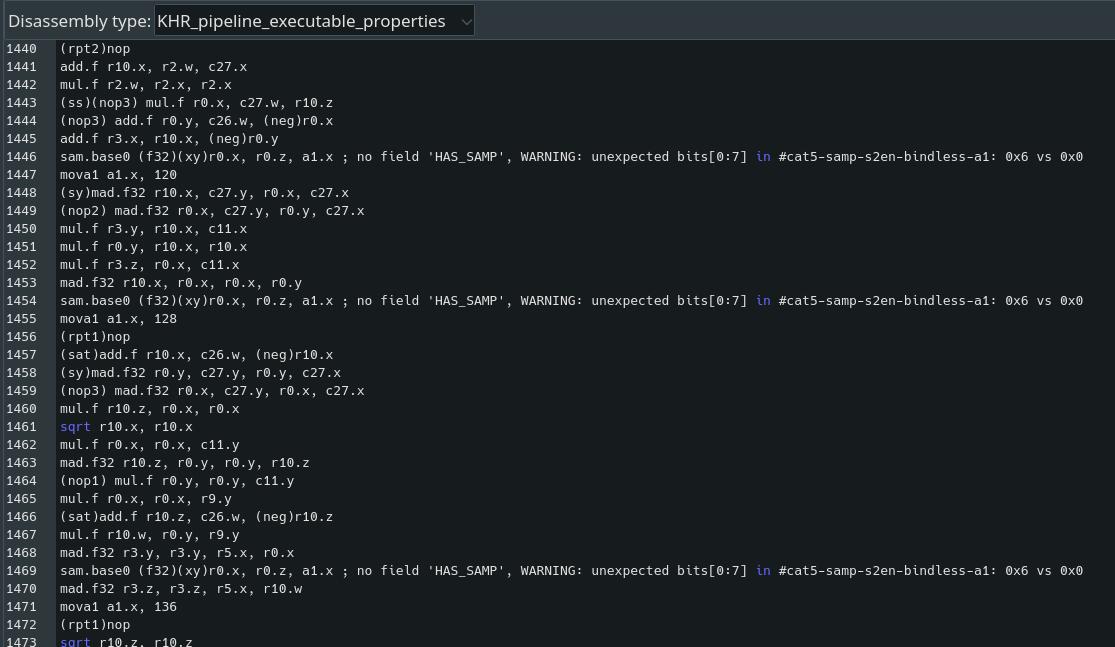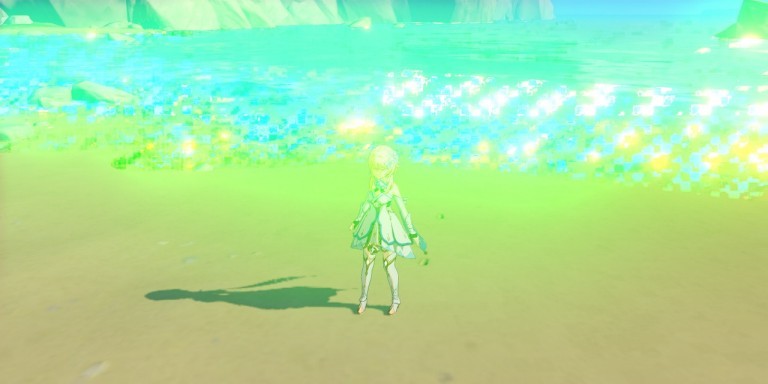Turnips in the wild (Part 1)
Running games and benchmarks is much more exciting than trying to fix a handful of remaining synthetic tests. Turnip, which is an open-source Vulkan driver for recent Adreno GPUs, should already be capable of running real world applications, and they always have a way to break the driver in a new, unexpected ways.
TauCeti Vulkan Technology Benchmark
The benchmark greeted me with this wonderful field which looked a little blocky:

It’s not a crash, it’s not a hang, there is something wrong either with textures or with a shader. So, let’s take a closer look at a frame. Here is the first major draw call which looks wrong:

Now, let’s take a look at textures used by the draw:

That’s a lot of textures! But all of them look fine; yes, there are some textures that look blocky, but these textures are just small, so nothing wrong here.
The next stop is the fragment shader, I recently implemented an extension which helps with that. VK_KHR_pipeline_executable_properties allows the reporting of additional information about shaders in a pipeline. In case of Turnip it is statistics about registers and assembly of the shader:

sam.base0 (f32)(xy)r0.x, r0.z, a1.x ; no field 'HAS_SAMP', WARNING: unexpected bits[0:7] in #cat5-samp-s2en-bindless-a1: 0x6 vs 0x0
Bingo! Usually when the issue is in a shader I have to either make educated guesses and/or reduce the shader until the issue is apparent. However, here we can immediately spot instructions with a warning. It may not be the cause of earth mis-rendering, but these instructions do sampling from textures, soooo.
After fixing their encoding, which was caused by a mistake in the XML definition, the ground is now rendered correctly:

After looking a bit more at the frame I saw that the same issue plagued all rock formations, and now it is gone too. The final fix could be seen at
ir3/isa,parser: fix encoding and parsing of bindless s2en SAM (!9628)
Genshin Impact
Now it’s time for a more heavyweight opponent - Genshin Impact, one of the most popular mobile games at the moment. Genshin Impact supports both GLES and Vulkan, and defaults to GLES on all but several devices. In any case, Vulkan could be enabled by editing a config file.
There are several mis-renderings in the game, however here I would describe the one which shows why it is important to use all available validation tooling for such complex API as Vulkan. Other mis-renderings would be a matter for the second post.
Gameplay – Disco Water
Proceeding to the gameplay and running around for a bit revealed a major artifacts on the water surface:

This one was a multiframe effect so I had to capture a trace of all frames and then find the one where issue began. The draw call I found:

It adds water to the first framebuffer and a lot of artifacts to the second one. Looking at the framebuffer configuration - I could see that the fragment shader doesn’t write to the second framebuffer. Is it allowed? Yes. Is the behavior defined? No! VK_LAYER_KHRONOS_validation warns us about it, if warnings are enabled:
UNASSIGNED-CoreValidation-Shader-InputNotProduced(WARN / SPEC): Validation Warning:
Attachment 1 not written by fragment shader; undefined values will be written to attachment
“undefined values will be written to attachment” may mean that nothing is written into it, like expected by the game, or that random values are written to the second attachment, like Turnip does. Such behavior should not be relied upon, so Turnip does not contradict the specification here and there is nothing to fix. Case closed.
More mis-renderings and investigations to come in the next post(s).
Comments